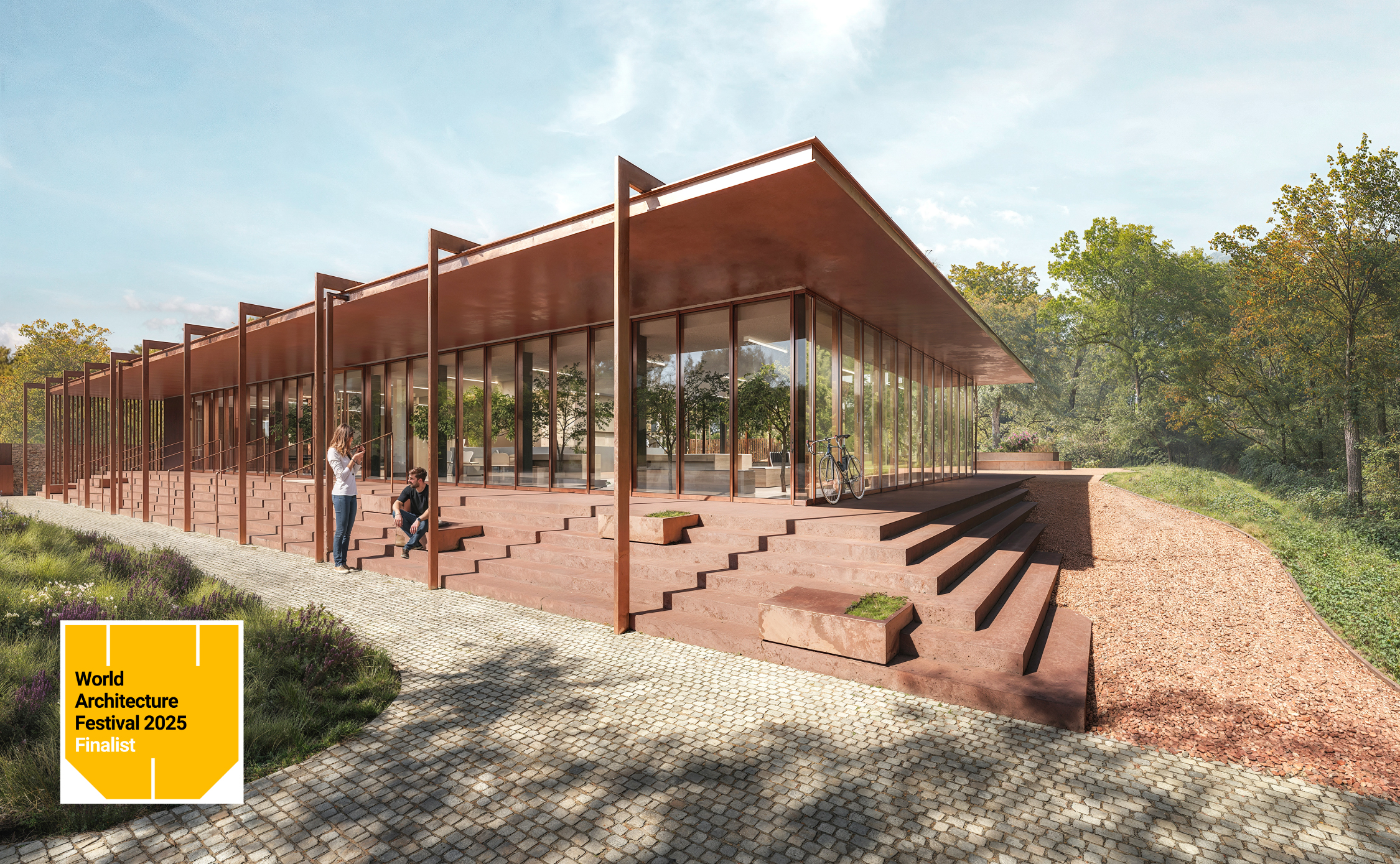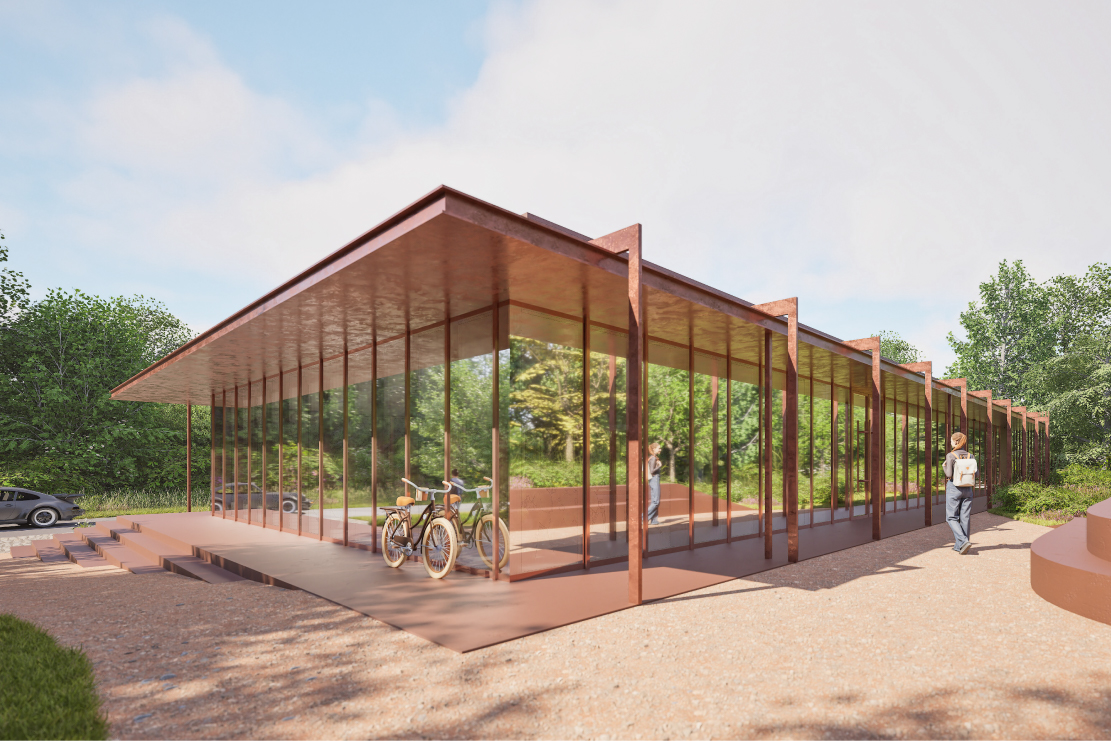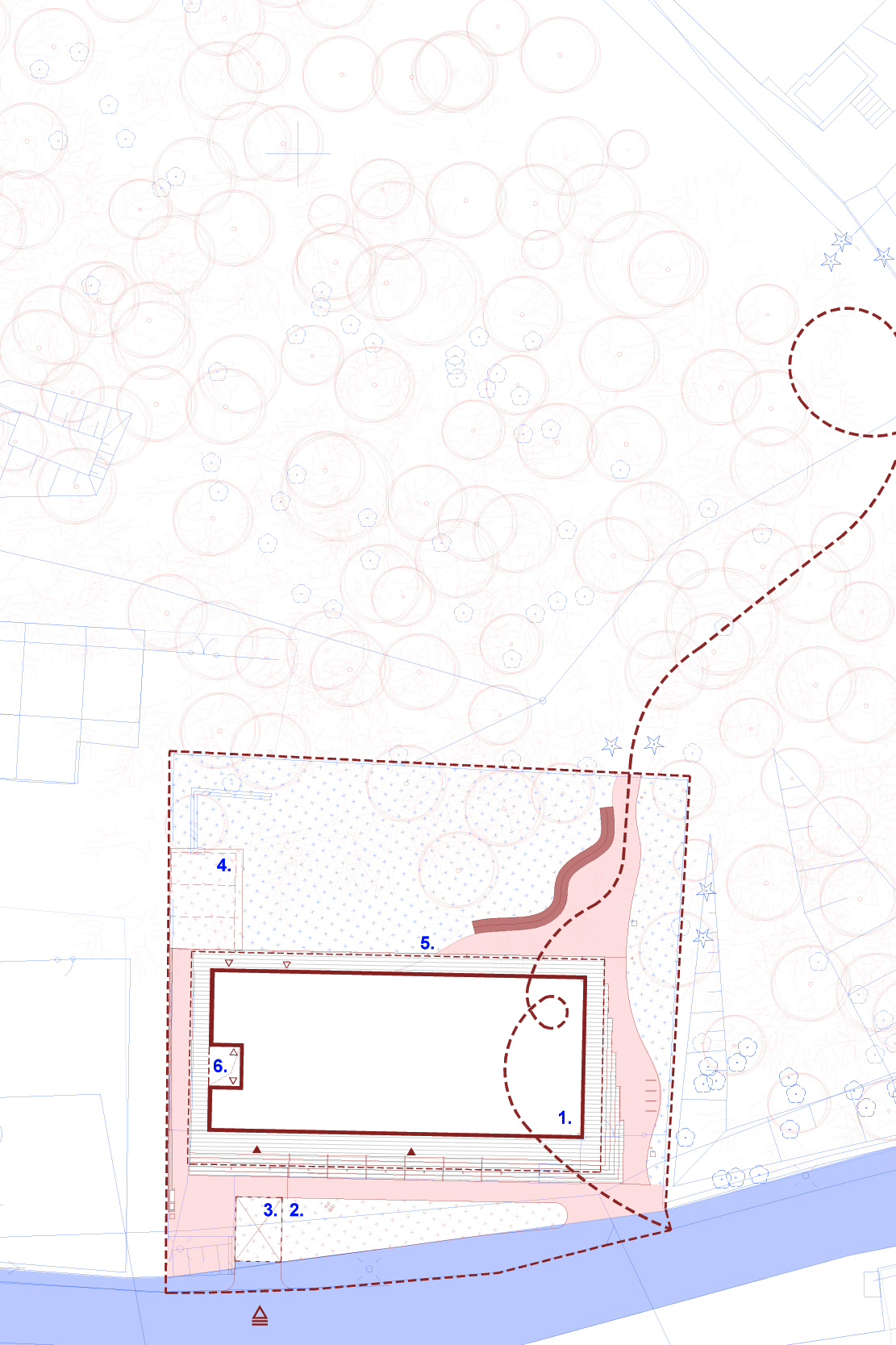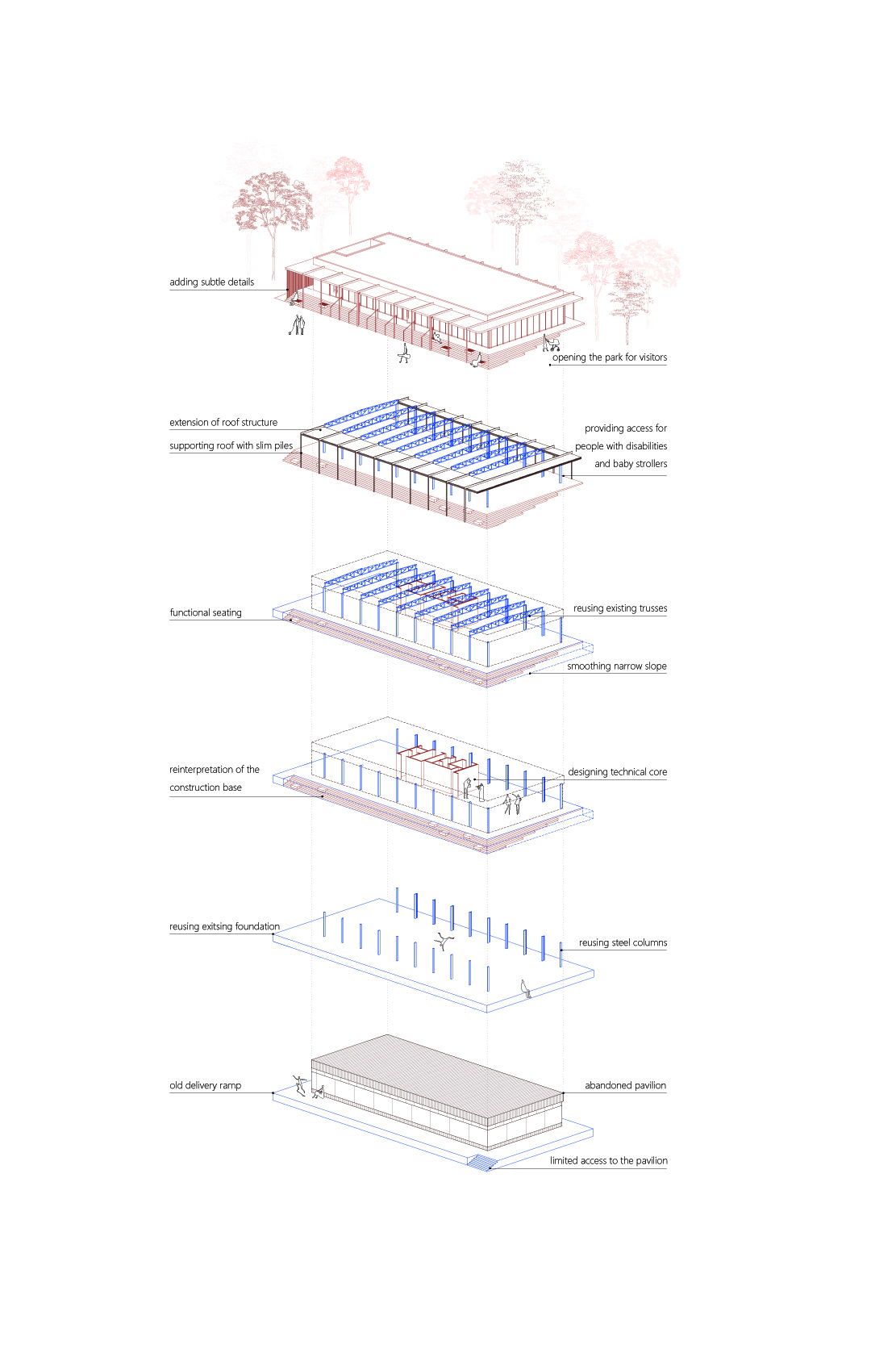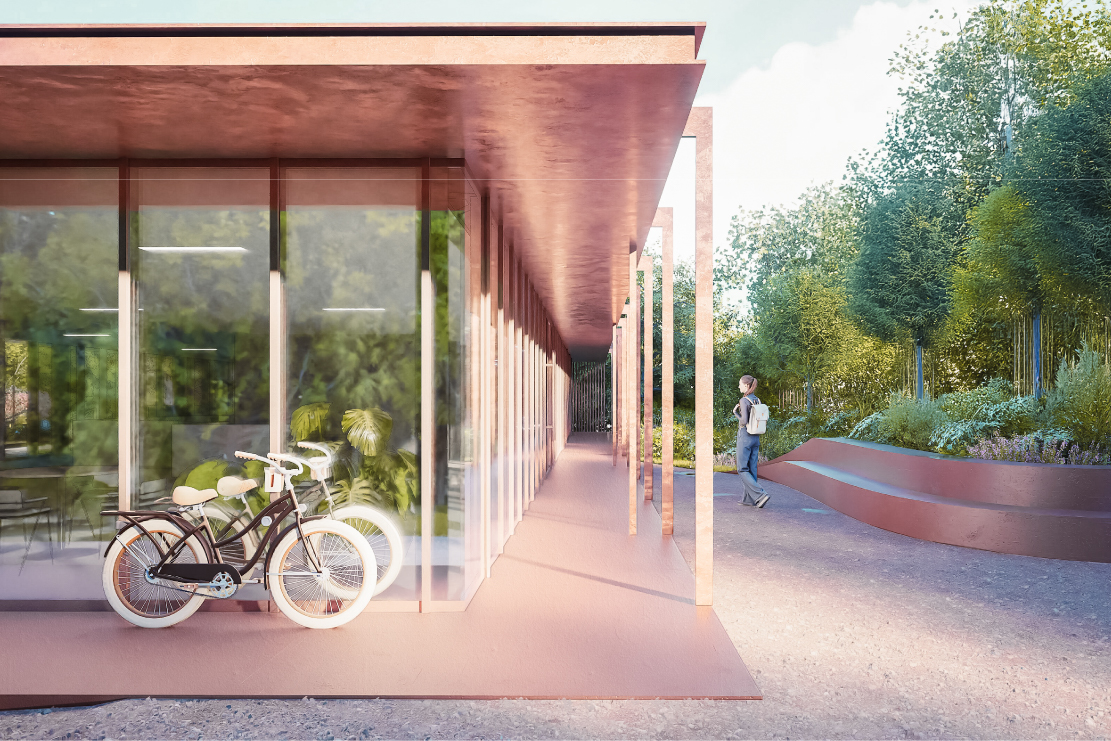The facility was designed as part of a large-scale architectural and urban planning project aimed at rebuilding and revitalizing a former health resort located in Poland. Although the building is small, it stands out because it is the first structure visible upon entering the town. The pavilion serves as a gateway to the Przerzeczyn-Zdrój health resort, which is why it was decided that it would function as an information point combined with a small restaurant and other services. The modernized building was previously an unused service pavilion. It was decided to retain the foundations and structural columns of the existing building. The designers sought to open up the space by removing all functional and visual barriers. To this end, the structural element was enclosed in a glass façade. The technical functions of the building were placed in its center and along the western wall, which required separating the building from the neighboring one. This made it possible to open three sides of the building to the surrounding greenery. The next step was to introduce structural elements that would give the impression of a “forest of structures” surrounded by natural greenery. Therefore, special attention was paid to minimizing the size of additional structural elements and refining the finishing details in order to maintain the maximum lightness of the pavilion. Going beyond the building itself, the concept of integration with the beauty of the existing landscape was also reflected in the land development. In addition to greenery, a rain garden was planned as part of eco-friendly measures related to rainwater management. The paths leading to the adjacent historic park were designed in the form of winding, meandering walking routes, and the small architectural elements were harmoniously integrated into the shapes of the marked routes.
